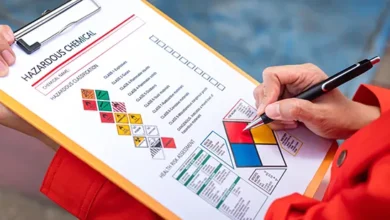How Effective Visuals Are Transforming the Modern Classroom

The Power of Good Visualizations in the Contemporary Classroom.
Learning has changed significantly in the modern day school system way past chalkboards and textbooks. There is always an urge amongst the teachers to seek some innovative means to increase engagement, enhance an understanding and make lessons impressive. The application of the school visuals as one of the strongest drivers is becoming more frequent as images, infographics, charts, diagrams, and other visuals can improve the teaching and learning process to a considerable extent.
Visual resources have never been an issue in learning but have taken a tremendous leap in the digital era. The emergence of multimedia learning and the tendency of a decreased attention span make visuals an essential part of the lesson, instead of being optional.
Science of Visual Learning
Studies out there all time demonstrate that the human brain downloads visuals a lot quicker as compared to text. Studies show that people remember 65% of the content they see, three days after seeing as compared to the 10 percent of the written or spoken word. This is why visual learning is a very effective means, particularly, in the classroom where teachers deliver a complex subject such as math, science, and history.
The incorporation of school visuals like diagrams, timeline, and mind map can also be used to simplify such a topic and enable students to understand the topic. This can be of great use especially to visual learners, which constitute significant numbers in any classroom.
Enhancing Engagement and Participation
Studies have always indicated that the human mind receives visuals faster than text. Based on research, it was found out that individuals can remember up to 65 percent of what they see three days later versus the 10 percent that they memorize what they wrote or said. This explains why visual learning is a very powerful approach and can be utilised in a classroom where learning of complex aspects such as math, science, and history is fronted.
Through such tools as diagrams, timelines, and mind maps, a teacher can make a challenging topic less complicated and make it easier to understand. This is of great consideration especially to the visual learners who constitute the majority of a classroom.
Improving Participation and Participation
It is a reality; students would focus more when a material is beautiful to the eyes. Software such as bright and colored images and slideshows can make a boring lecture experience exciting. Use of interactive visuals like smart board figures or animated videos engages the students and gets them to interact and discover rather than to be mere consumers of knowledge.
Also, pictures could be used to make learning interesting and participatory like in primary school with the use of storyboards, flashcards, and pictures posters. Infographics, graphs, and online presentations assist in conveying data-loaded details in a readable form in secondary and tertiary education. Thoughtful school imagery does prompt wondering, inquiry, and in-class discussion.
Supporting Diverse Learning Needs
All students are unique. People absorb information in various ways, some learn better by reading it, some learn better by listening and there are those who learn by seeing. Visual devices enable instructors to support different learning styles and eliminate a language barrier. In other words, students who study a second language, such as English learn better when they are shown pictures and demonstrations to explain something.
Besides, visual material is helpful in children with learning difficulties e.g. dyslexia or ADHD. Illustrations and structure makes the subject accessible and less frightening than solid lines of text.
Bringing Real World Concepts Into the Classroom
Among the main benefits of image use in learning and teaching, we need to point at the fact that visual resources can make abstract or far concepts touch closer to home. A teacher conducting a history course, as an example, can rely on maps, old photos, documentary film excerpts to take students back a few hundred years. Students perceive a science lesson on ecosystems and feel connected when presented with photos of real life nature and wildlife or an animated life-cycle diagram.
Education based on careers and skills is not an exception and it also profits from the school visuals. Job definition charts, videos on skills in the workplace and charts on soft skills such as teamwork and communicating are helpful tools that equip the students on what to expect in life after school.
The Place of Technology in School Visuals in the Present Day
Technology has changed how visuals are produced and shared at school. Classical powerpoint presentations and smart boards to learning applications and virtual reality, teachers of today have plenty of tools to utilize. Such programs as Canva and Google Slides will help teachers create appealing visuals even without practicing graphic design.
A lot of the schools are also adopting, in their curriculum, multimedia content such as YouTube or interactive simulations. Such types of school visuals complement the conventional lesson plans and develop a more engaging learning experience.
Using Visuals to Their Fullest in the Classroom
In order to work out, the visuals should be well defined, age related as well as the objectives of the learning. These are the best practices of educators:
- Less is more: Do not use too many things in a single image.
- Put quality graphics: blurred images are destructive and confusing.
- Text and pictures: Do not forget a word should complement a picture, not substitute it completely.
- Promote visual creation by students: such projects might be posters, mind maps, or slide presentations in which the students strengthen their learning by creating visuals analogous to posters, mind maps, or slide presentations.
Conclusion
At a time when time is a limited asset and people are more concerned about comprehending rather than memorizing, visual material is instrumental in learning. Appropriate presentation of school visuals is not only more interesting but also leads to memorizing important information and the ability to make use of information students get. Visual materials will also always form a major component of the new and progressive teaching methods as the classrooms progress technologically.




